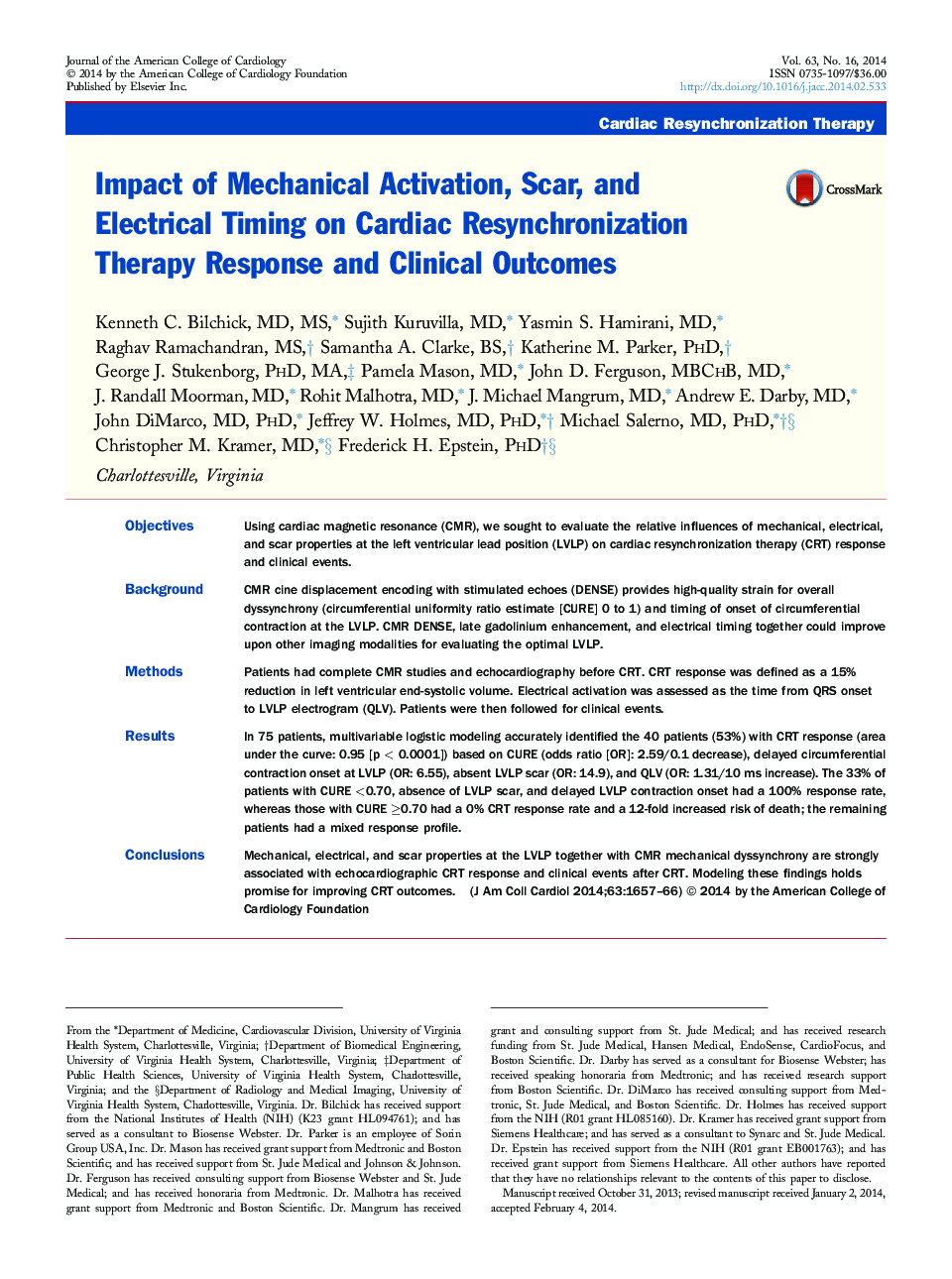| کد مقاله | کد نشریه | سال انتشار | مقاله انگلیسی | نسخه تمام متن |
|---|---|---|---|---|
| 2944460 | 1577106 | 2014 | 10 صفحه PDF | دانلود رایگان |
ObjectivesUsing cardiac magnetic resonance (CMR), we sought to evaluate the relative influences of mechanical, electrical, and scar properties at the left ventricular lead position (LVLP) on cardiac resynchronization therapy (CRT) response and clinical events.BackgroundCMR cine displacement encoding with stimulated echoes (DENSE) provides high-quality strain for overall dyssynchrony (circumferential uniformity ratio estimate [CURE] 0 to 1) and timing of onset of circumferential contraction at the LVLP. CMR DENSE, late gadolinium enhancement, and electrical timing together could improve upon other imaging modalities for evaluating the optimal LVLP.MethodsPatients had complete CMR studies and echocardiography before CRT. CRT response was defined as a 15% reduction in left ventricular end-systolic volume. Electrical activation was assessed as the time from QRS onset to LVLP electrogram (QLV). Patients were then followed for clinical events.ResultsIn 75 patients, multivariable logistic modeling accurately identified the 40 patients (53%) with CRT response (area under the curve: 0.95 [p < 0.0001]) based on CURE (odds ratio [OR]: 2.59/0.1 decrease), delayed circumferential contraction onset at LVLP (OR: 6.55), absent LVLP scar (OR: 14.9), and QLV (OR: 1.31/10 ms increase). The 33% of patients with CURE <0.70, absence of LVLP scar, and delayed LVLP contraction onset had a 100% response rate, whereas those with CURE ≥0.70 had a 0% CRT response rate and a 12-fold increased risk of death; the remaining patients had a mixed response profile.ConclusionsMechanical, electrical, and scar properties at the LVLP together with CMR mechanical dyssynchrony are strongly associated with echocardiographic CRT response and clinical events after CRT. Modeling these findings holds promise for improving CRT outcomes.
Journal: Journal of the American College of Cardiology - Volume 63, Issue 16, 29 April 2014, Pages 1657–1666
